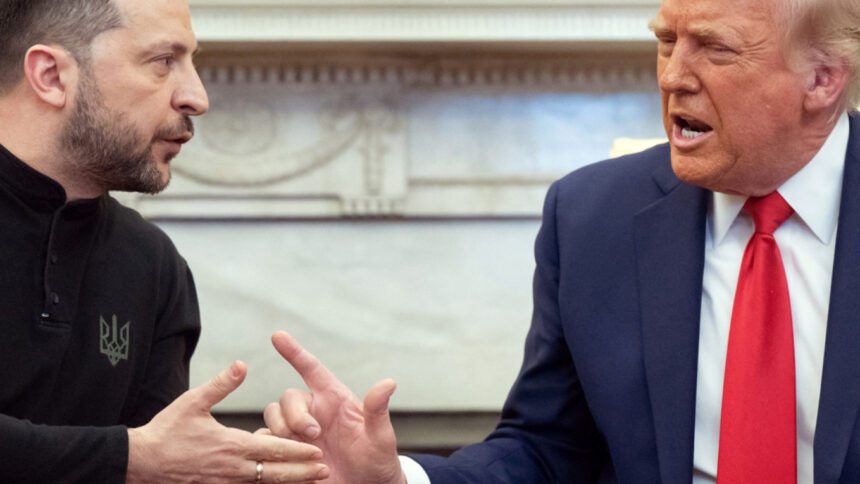The rupture between the Trump administration and Ukraine — the Oval Office confrontation, followed by the suspension of U.S. military aid and intelligence sharing with Ukraine — is painful, but not entirely unexpected for Kyiv and its supporters. It portends a break between Ukraine and its European partners such as France and Britain, which tried but ultimately failed to prevent this outcome.
After the meeting, Republican politicians rushed to praise Trump for his supposed defense of U.S. interests, and putting America first. Yet looking at the bigger picture and the main actors involved in the war — the U.S., Ukraine, Russia, Europe and Britain — the outcome of the last several weeks of escalating tensions between Trump and Ukraine is certain for just one of them: the United States lost — and it lost badly.
In the short term, President Trump failed to achieve any of the things he sought. His desire to freeze the war and quickly resolve the conflict now seems unattainable. He was also unable to get a much-desired stake in Ukraine’s rare earth minerals or sideline and potentially remove Ukraine’s President Volodymyr Zelensky, whom he strongly dislikes, from office. associates with his first impeachment in 2019 and had recently called a “dictator.” The stop to U.S. aid to Ukraine is about cutting losses and hoping that pressure might achieve what diplomacy could not, but no U.S. aid also means much decreased U.S. leverage going forward.
Beyond Trump, the longer-term consequences for the U.S. are less certain but still overwhelmingly negative. The administration’s policies of undermining the existing transatlantic security structures and alienating and threatening allies while cozying up to President Vladimir Putin’s Russia are bound to create a more dangerous, chaotic and unpredictable world. Simultaneously, dismantling the existing instruments of soft and hard power, foreign affairs expertise and state capacity writ large makes navigating or even surviving this more dangerous world much harder for the U.S.opinionWelcome to Trump and Putin’s Brave New WorldRead more
For Ukraine, which is clearly exhausted after three years of brutal fighting, the most desirable outcome of engagement with the Trump administration would have been a commitment to continued military support and a ceasefire agreement that included the prospect of NATO membership or, barring that, meaningful security guarantees that would reduce the risk of further Russian aggression. Trump, however, is clearly unwilling to offer such a deal.
The worst possible outcome for Ukraine would have been a bad deal that gives Russia control over occupied territories and keeps Ukraine weakened, exposed, potentially economically exploited by the U.S. and deprived of Western security umbrella. The rhetoric of both Trump and Vice President J.D. Vance suggests that this was precisely the agreement they had in mind. Such an outcome, however, is a sure recipe for a future war once Putin had a chance to regroup and a likely subjugation of Ukraine by the Kremlin. This catastrophic outcome Zelensky was able — at least for now — to avoid.
What Ukraine is left with, therefore, is neither a win nor a total surrender but a continued struggle, for now with no U.S. support but a hope for a better outcome down the road. For now, Ukraine should be able to hold on. But in the long run will have to heavily rely on the increased support of its British and EU partners. Here, Ukraine also has reasons for optimism. Faced with Trump’s bullying, the Europeans are now mobilized and seem more determined to invest in their own security than ever.












